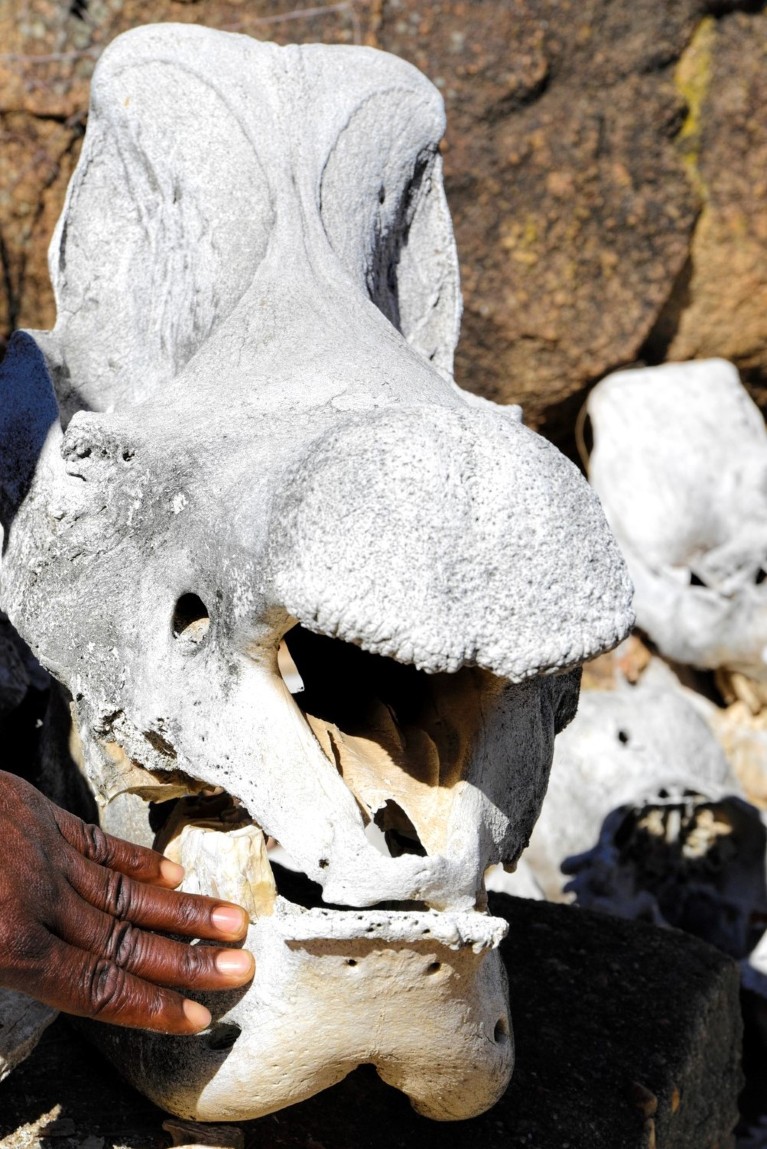
Skull of poached southern white rhinoceros: Skulls of both black and white rhinoceros at a sort of graveyard commemorating a huge slaughter of rhinos in Zimbabwe, 2009. This graveyard represents the stark future for these hapless beasts, one of Africa's big five.Credit: Whiteway/ iStock/ Getty Images Plus
There are variable reasons for the hunting of wildlife in different regions of the world. In Africa the activity is economically driven, with animals hunted for subsistence and commercial purposes. In Europe, population control, and cultural and social practice are the main factors, a study published in Plos Biology finds
The researchers interviewed more than 100 managers of protected areas in 25 countries in Africa and Europe, including Cameroon, Ethiopia, Ghana, Kenya, France, Austria, Germany, and Hungary.
In both regions, the study says, hunting was sometimes driven by human-wildlife conflicts (HWC), with the researchers finding a higher rise in cases proportionate to rising human population density. The researchers predict a rise in HWC in the two regions, as climate change and biodiversity loss increase inequality, and force humans into protected areas. According to the study’s lead author, Mona Bachmann, froHumboldt Universityty in Berlin, integration of local communities and trustful relationships are essential for conservation, regardless of socioeconomic conditions. Her team called for a review of the different legalities surrounding hunting between Europe and Africa, and called for a more standardized approach, with community input in decision making.
“Protected areas and local communities cannot conserve wildlife until large-scale and sustainable economic development removes the economic constraints that currently drive poachers to exploit even remote parks,” the researchers say.
